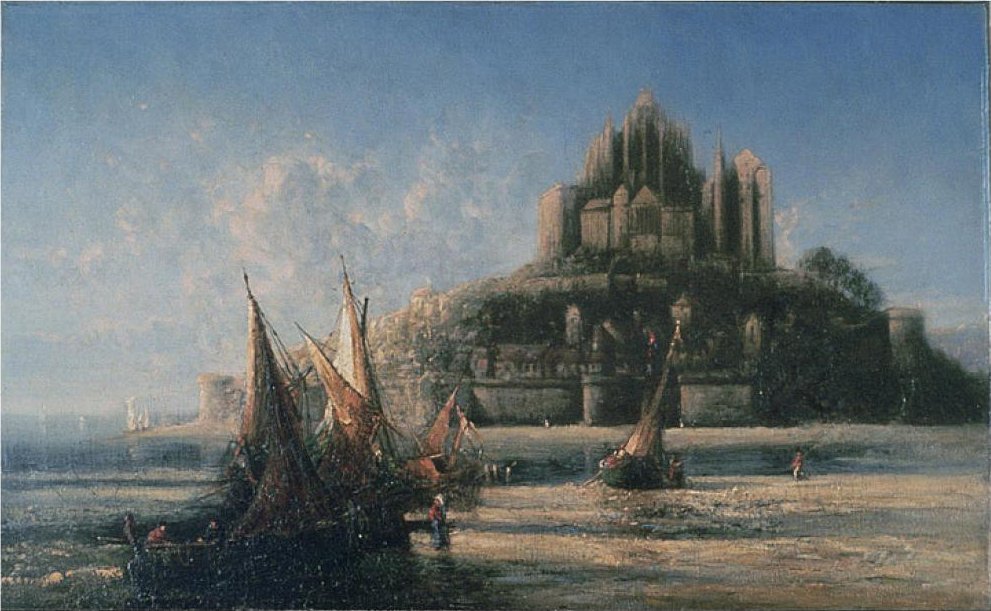Continuing our series on the “Sword of St. Michael,” we will now examine various apparitions of St. Michael along the sacred line of seven monasteries that stretches from Ireland to Israel.
[featured-image single_newwindow=”false”]
Originally called “Mont Tombe,” the solitary rock in the middle of the sea outside of Normandy received a new name after the holy Archangel appeared to the local bishop. It took a little prodding, but soon enough the bishop established a church on the island. It is one of the most famous attractions in France, now called “Mont St. Michel.”
According to tradition, before St. Michael appeared in France a group of Irish monks arrived at the island in the sixth century. They established a small hermitage there, but little is known about who they were and how long they were on the island. This would have been around the same time when Skellig Michael was first founded.
Then in 708 St. Michael appeared to St. Aubert, bishop of Avranches. When St. Michael appeared the first time, Aubert thought it was a dream and dismissed it. Then the Archangel appeared a second time and again reiterated his desire that a church be built upon Mont Tombe in his honor. Aubert ignored the request a second time, not sure about the size of the church.
St. Michael then appeared a third time and sought to get Aubert’s attention by pressing his finger on Aubert’s forehead. He burned a hole in his head and Aubert quickly started to make plans for the church on Mont Tombe.
The initial church was founded on October 16, 708 and Aubert sent a request to Monte Gargano, where St. Michael had appeared in 490. He was able to secure two relics from Gargano, including a portion of a red altar cloth touched by St. Michael and a piece of rock from the footprints the Archangel left there.
Before Michael’s arrival, some legends claimed the island marked a passageway between this world and the afterlife. Those who died in the region would be carried near the mount in order for their soul to be sent onward.
At the time it was believed St. Michael held the task of bringing souls to Heaven as well as the judgement of souls. Therefore it was natural to rename the island from Mont Tombe to Mont St. Michel.
Other legends surrounding the sacred island include the story that it was from Mont St. Michel that the Archangel cast Satan from Heaven. Another legend tells of a monk who was looking for fresh water on the island and through the direction of St. Michael, broke open a rock where fresh water flowed out.
The island has since been a symbol of St. Michael’s victory as well as his miraculous intercessory power.
Throughout the centuries, Mont St. Michel has been a place of pilgrimage and an inspiration to countless souls, who are drawn deeper in their devotion to St. Michael.
One of its nicknames is “Mount St. Michael at the peril of the sea,” as it was difficult to access for medieval pilgrims.

